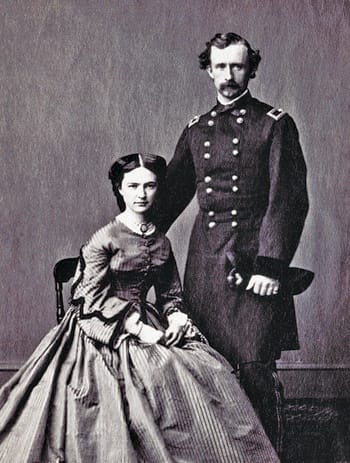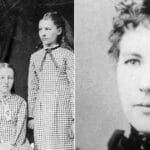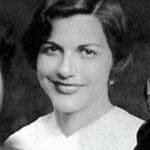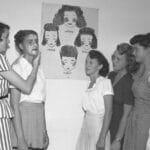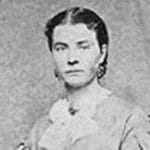Step into the captivating world of Elizabeth Bacon Custer, a woman who defied expectations and carved her own path amidst the untamed beauty and brutal realities of the American West. More than just “Custer’s wife,” Libbie, as she was affectionately known, was a gifted writer, a resilient survivor, and a powerful force in shaping her husband’s legacy. Her story is a testament to the enduring strength of love, the complexities of history, and the often-unsung stories of women who helped shape the American frontier.
A Life Intertwined with History
Often remembered simply as “Custer’s wife,” Elizabeth Bacon Custer was a force to be reckoned with in her own right. Married to the legendary, and controversial, General George Custer, Libbie led a life far from ordinary. Born into a prominent Michigan family in 1842, she was known for her intelligence, vivacity, and a touch of mischief. Her world changed forever when she encountered the dashing George Custer, a rising star in the US Army.
Their love story, set against the backdrop of the Civil War, was one for the ages. While George was captivated by Libbie’s spirit and charm, her father, Judge Daniel Bacon, initially disapproved of the match, concerned about the hardships of military life. However, Custer’s battlefield successes, particularly his bravery at Gettysburg, eventually won over the hesitant judge. The couple wed in 1864, embarking on a life that would be both exhilarating and perilous.
Libbie embraced life as an army wife, following her husband to various postings on the volatile frontier. She faced the challenges with courage and grace, finding moments of beauty and adventure amidst the harsh realities. Always by George’s side, she became a keen observer of the West, documenting her experiences in vivid detail. Little did she know these writings would later form the foundation of her own literary career.
Tragedy and Transformation: The Aftermath of Little Bighorn
The year 1876 brought a devastating turning point: the Battle of Little Bighorn. George Custer and his entire command perished in a clash with Lakota, Northern Cheyenne, and Arapaho warriors. The nation mourned, and Libbie, at just 34 years old, became a widow, facing unimaginable grief.
However, Libbie Custer possessed incredible resilience. Instead of retreating into seclusion, she embarked on a new mission: safeguarding and shaping her husband’s legacy. For nearly six decades, she tirelessly worked to solidify his image as a heroic figure. Her three books, “Boots and Saddles,” “Tenting on the Plains,” and “Following the Guidon,” along with countless lectures, painted a romantic portrait of Custer and the American West. Through her words, she helped shape the public’s perception of her husband, ensuring his enduring fame.
Unraveling the Mysteries: Did George Custer Have a Child?
While history books record George and Elizabeth Custer as childless, whispers of a different truth have persisted for generations. Some accounts, particularly within Native American oral histories, hint at a relationship between Custer and Mo-nah-se-tah, a Cheyenne woman. These stories suggest the possibility of a child born from this union, adding another layer of complexity to Custer’s already controversial legacy.
The lack of official documentation makes it difficult to confirm these claims definitively. Adding further intrigue is Elizabeth Custer’s role as the architect of her husband’s public image. Did she, perhaps, choose to omit or downplay information that could have tarnished Custer’s reputation? The potential existence of a child fathered by Custer, particularly one of Cheyenne heritage, would challenge the carefully constructed narrative surrounding his life.
This enduring mystery serves as a compelling reminder that history is rarely straightforward. It is a tapestry woven from documented facts, oral traditions, and often, subjective interpretations. While the truth about George Custer’s potential descendants may remain elusive, the search for answers offers valuable insights into the complexities of the past and the importance of considering multiple perspectives.
Hero or Villain? The Complicated Legacy of General Custer
George Armstrong Custer remains one of the most polarizing figures in American history, a man celebrated for his Civil War heroism yet condemned for his actions during the Indian Wars. This duality makes it difficult to definitively label him as either “good” or “bad.”
Arguments for “Good”:
- Civil War Valor: Custer earned distinction for his bravery and tactical skill during the Civil War, contributing significantly to Union victories.
- National Icon: His daring exploits and tragic end at Little Bighorn cemented his status as a legendary figure in American history.
- Charisma and Leadership: Custer possessed undeniable charisma and leadership qualities, inspiring fierce loyalty in his men.
Arguments for “Bad”:
- Little Bighorn Controversy: Many historians criticize Custer’s actions at the Battle of Little Bighorn, suggesting reckless disregard for his men and a gross underestimation of Native American strength.
- Treatment of Native Americans: Custer participated in campaigns that led to the displacement and death of Native American people, acts considered morally reprehensible by today’s standards.
- Ambition and Self-Promotion: Custer’s critics often point to his ambition and penchant for self-promotion, suggesting he prioritized personal glory over the well-being of his troops.
Elizabeth Bacon Custer’s tireless efforts to shape her husband’s legacy add yet another layer to this complex narrative. Her writings and lectures undoubtedly influenced how generations viewed Custer, casting him in a more heroic light.
It is essential to acknowledge both sides of this complicated legacy. Examining Custer’s life requires looking beyond simplistic labels of “hero” or “villain.” By considering the historical context, diverse perspectives, and the lasting consequences of his actions, we can strive for a more nuanced understanding of this controversial figure.
From Ballrooms to Battlefields: How George Custer Met His Wife
The story of how George Custer met his wife, Elizabeth Bacon, is as captivating as any battlefield drama. It’s a tale of love at first sight, parental disapproval, and the enduring power of love amidst the turmoil of war.
Their paths first crossed in Monroe, Michigan, Libbie’s hometown. George, a brash young officer on leave from the Civil War, was instantly smitten by Elizabeth’s beauty, intelligence, and spirit. However, winning her hand proved more challenging. Her father, Judge Daniel Bacon, viewed Custer’s social standing and unpredictable military career as unsuitable for his beloved daughter.
Undeterred, Custer embarked on a campaign to win over both Elizabeth and her skeptical father. He showered Libbie with affectionate letters and passionate promises, while his battlefield exploits, particularly his heroism at Gettysburg, gradually chipped away at Judge Bacon’s reservations. Impressed by Custer’s rising fame and courage, the judge finally relented.
On a cold February day in 1864, George Custer and Elizabeth Bacon exchanged vows in Monroe, their union a testament to their enduring love. Their marriage would be a testament to the strength and resilience required to navigate the challenges of military life, the hardships of the frontier, and the ever-present threat of war.
A Legacy of Love and Resilience
Elizabeth Bacon Custer’s story is one that continues to resonate. She was more than just an army wife or a grieving widow; she was a woman of strength, intelligence, and unwavering devotion. Her writings provide a valuable window into the realities of frontier life, while her dedication to preserving her husband’s legacy had a profound impact on how we remember him today.
By delving deeper into Libbie Custer’s life, we gain a richer understanding of a pivotal period in American history. It’s a story about love, loss, and the power of individual narratives to shape our collective memory. As we continue to grapple with the complexities of our past, Elizabeth Bacon Custer’s story reminds us that history is not merely a collection of dates and battles but a vibrant tapestry woven from the experiences of real people, each with their own story to tell.
Key Takeaways:
- Elizabeth Bacon Custer was a woman of remarkable strength, intelligence, and literary talent.
- She navigated the challenges of frontier life, endured personal tragedy, and played a pivotal role in shaping her husband’s legacy.
- The possibility of George Custer fathering a child outside his marriage, while unconfirmed, adds a layer of intrigue and complexity to his story.
- George Armstrong Custer’s legacy remains a source of debate, with valid arguments for both his heroism and his controversial actions.
- The love story of George and Libbie Custer unfolded against a dramatic historical backdrop, highlighting the endurance of the human spirit in the face of adversity.
Don’t Miss Out!
If you’re eager to explore more captivating historical narratives, discover the intriguing story behind colonies ought to be encountaries. For a deeper understanding of a pivotal period in world history, delve into what’s the difference between glasnost and perestroika. And to uncover the stories of individuals whose lives intersected with pivotal historical moments, learn more about Yankel Rosenbaum
